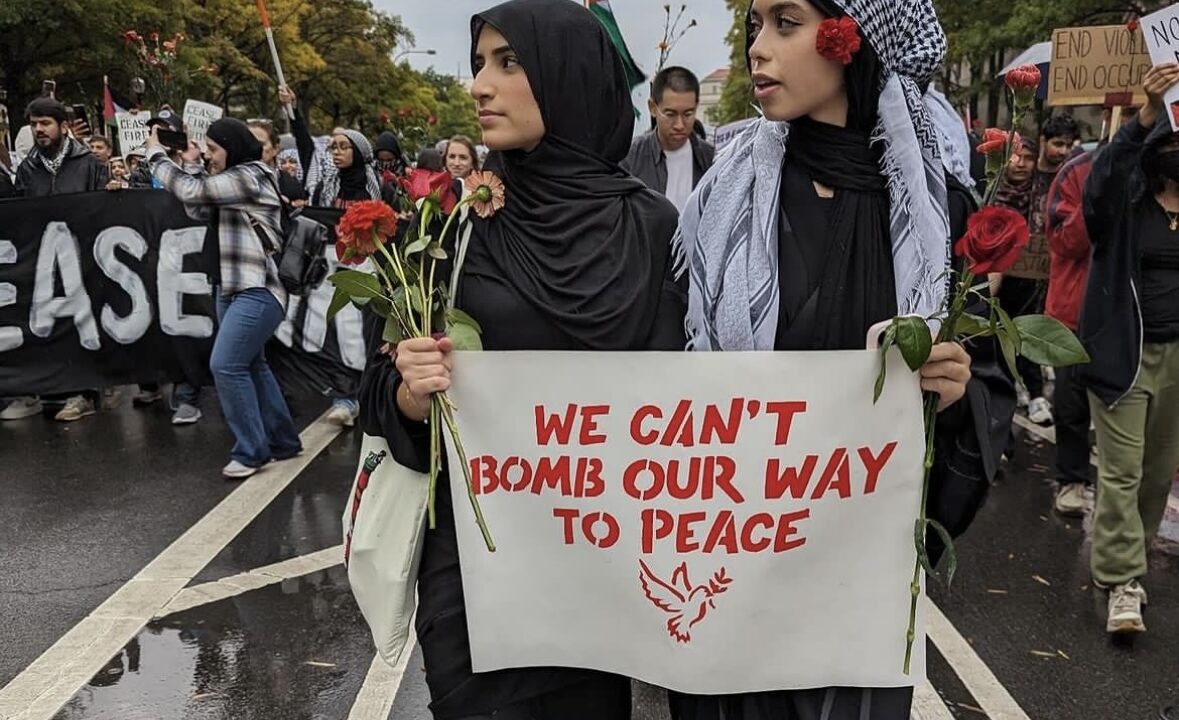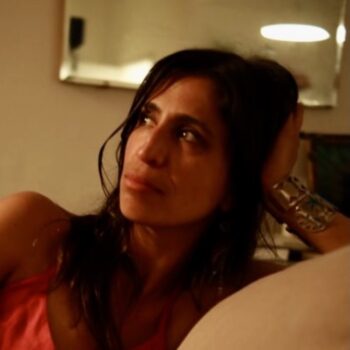“Hard times require furious dancing. Each of us is proof.” – Alice Walker
From October 2023
Bombs are falling. Rubble is falling. I am falling to pieces and watching you fall deeper into despair. We are falling down dark internet rabbit holes, witnessing unspeakable horrors unfold and the precepts of human decency fray. To say, as Fred Moten did, that “dancing is what we make of falling” is not to say that there is beauty in terror, but rather that our capacity for redirecting force to change the outcome of violence is real and formidable. Action is a more potent and versatile instrument than hope; action advances our shared fight as much as it moves us through our collective fear.
Since October 7, those of us not on the frontlines of the siege of Gaza have been bombarded with images of devastation that defy comprehension, statistics that quantify loss beyond measure, and analysis that instructs us what to think about things elementally unthinkable. Simultaneously, fatalistic catchphrases like ‘the situation is too complicated’ or ‘the conflict is too intractable’ rhetorically kneecap demands for – and visions of – a free Palestine. We scroll and scroll on our phones, disembodied, as we consume more and more footage of violence inflicted on real bodies. When our primary tools for navigating genocide are our thumbs, it is easy to be seduced into retreat and isolation or coerced into the insulation of an algorithmic echo chamber. You may need time to mourn. You may want time to process. But stillness will neither protect nor heal you.
Consider the possibility, or rather the necessity, that you must reckon with the onslaught of bleakness and grief, the rage and love, and most of all, those gnawing, aching feelings of powerlessness through a seemingly contradictory method of building power: movement. Put your body in motion. Hurl yourself into the accelerant, propellant, all-engulfing force of action.
March, rally, sit-in, die-in, pray-in, walk-out, sign-on, strike, boycott, write, paint, sing, scream.
The first principle of classical physics– the law of inertia– states that objects at rest tend to stay at rest, whereas objects in motion tend to stay in motion. Many of us are using dissent, demonstration, and direct action to move others – from Congressional members to family members – toward the urgency of a ceasefire. Aside from building political leverage to pressure elected officials into acting and entreating others into joining us, these tactics evolve us: when we are moving, we are able to be moved to a different physical or emotional space, and a deeper political or spiritual place.
I write to you as a Jew and a direct action organizer, far more fluent in civil disobedience than in covenants. My great-grandfather sent his three young daughters to three different countries as a strategy to ensure that at least one might survive Nazi invasion. Despite this familial connection, my touchstone image of the Holocaust is a window with closed curtains. Zoom out to reveal the people who shuttered their blinds when they heard the heavy scuffs of boots climbing their building’s stairs, and who, afterward, looked outside to find their hallway wallpaper lined with their neighbors’ fingernail scratches. These specters of inaction haunt me.
Since October 7th, millions of people have defied laws, intervened in government proceedings, and interrupted the status quo in solidarity with Palestine. Mothers marched with their children in a national family day of action. A rabbi halted Biden’s speech at his own fundraiser. Faith leaders continue to occupy decision-makers’ offices, almost daily. People are taking over bridges, highways, museums, and college campuses. I sang down the halls of power as hundreds of Jews were arrested. I laid out mats on the National Mall for thousands of Muslims to pray. I marched in the streets carrying altars of red roses, heavy with raindrops and grief, to the White House. What these actions taught me is that I cannot avoid unsettling feelings but that by being in motion, I can harness them and beat back the ghosts of atrophy.
St. Thomas Aquinas theorized an object in motion as simply both what it is already and something else that it is not yet. In this sense, motion is the mode in which the future belongs to the present; it marries what is currently absent with what is about to be. Being in motion forces a reckoning of self: Am I who I thought I was? Am I who I want to be? Am I scared? But can I act anyway?
Taking action right now does not require that you have your analysis perfectly articulated, or understand the entirety of history; it does, however, require a moral fury. And choosing action is a commitment to changing and being changed. I am not stuck–not stuck in my ways, my beliefs, my language. I can unmoor myself from my reference points, from what I was conditioned to accept as truth, from the diversionary excuse not to act because no action I could do could possibly be of any impact. Doing more is being more. What the hands do, the heart learns.
Many current calls for a ceasefire in Gaza cohere around calls for seeing each other’s shared humanity. Humanity here means compassion, with leaders invoking Ruth Wilson Gilmore incontrovertible truth–“where life is precious, life is precious”– an attempt to hold conflicting grievances under a shared banner. Maurice Mitchell’s vision for a multi-racial and multi-faith movement for ceasefire centers humanity, invoking empathy as essential connective tissue across divides. Echoing Black leaders in the 2020 uprising, Hala Alyan writes that since Palestinians are deemed unworthy of the supposedly innate, universal quality of humanity, even their body count will never truly matter. Whether afforded or denied, humanity is depicted as a static essence.
Humanity needs to be animated, turned from a theoretical possibility into a felt reality. Action translates humanity into solidarity. And solidarity is like water; it fills the shape of the vessel that holds it. When our vessels are actions, we defy the systems of domination and control that have sought to categorize us in order to sow discord for centuries. And while nobody is arguing that the world will be saved by marches alone, when we move together, we are dangerous together. People that were never meant to exist, exist together.

